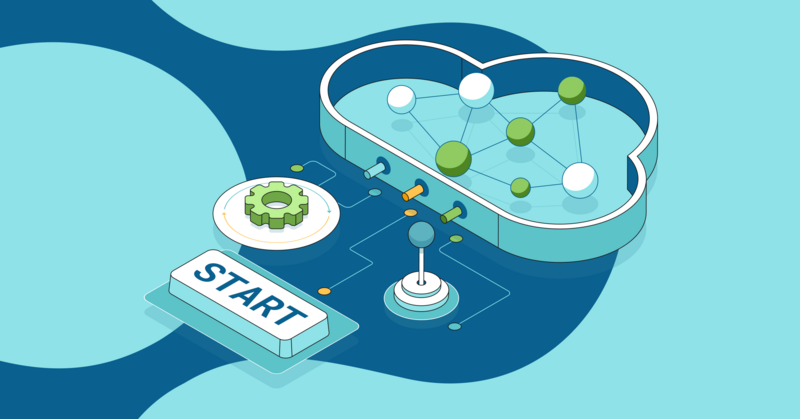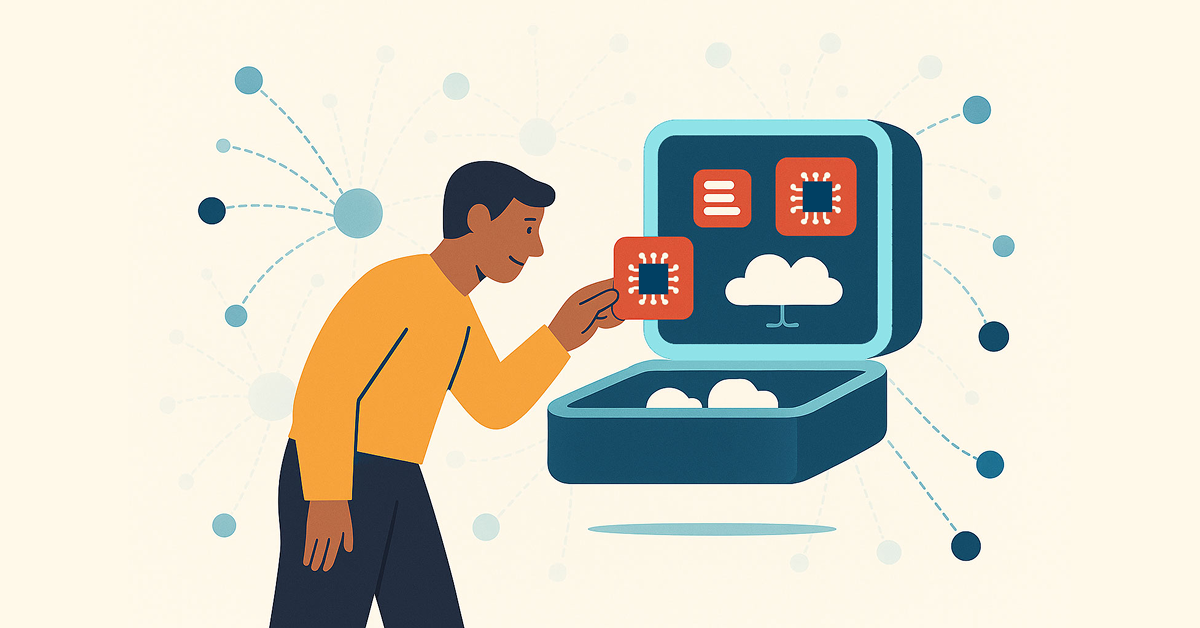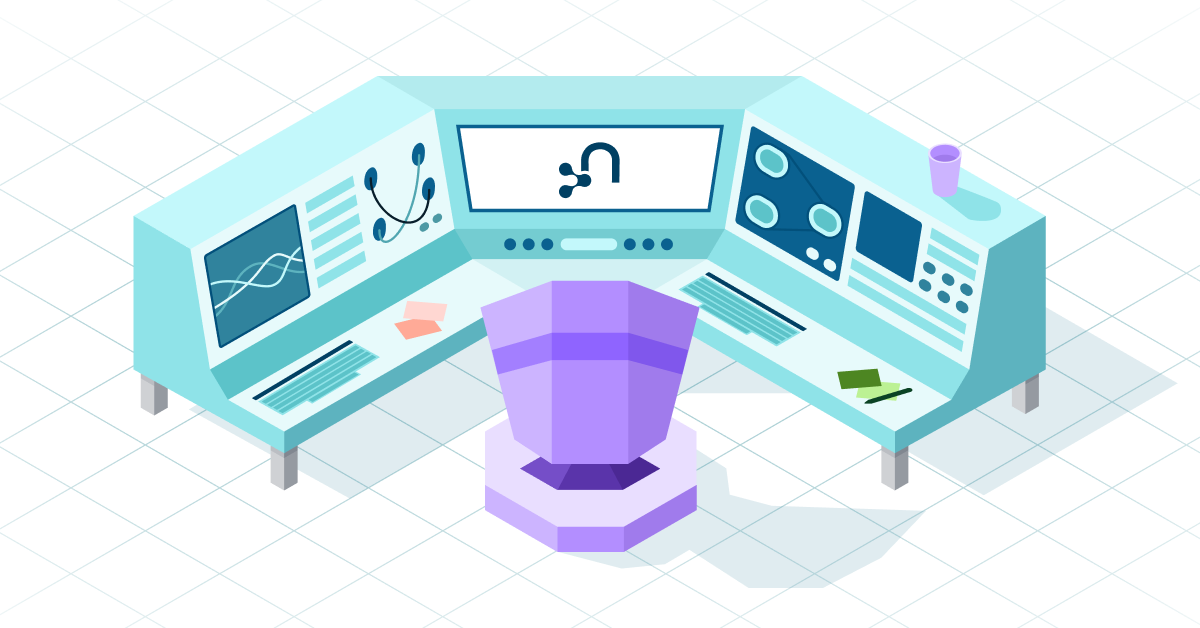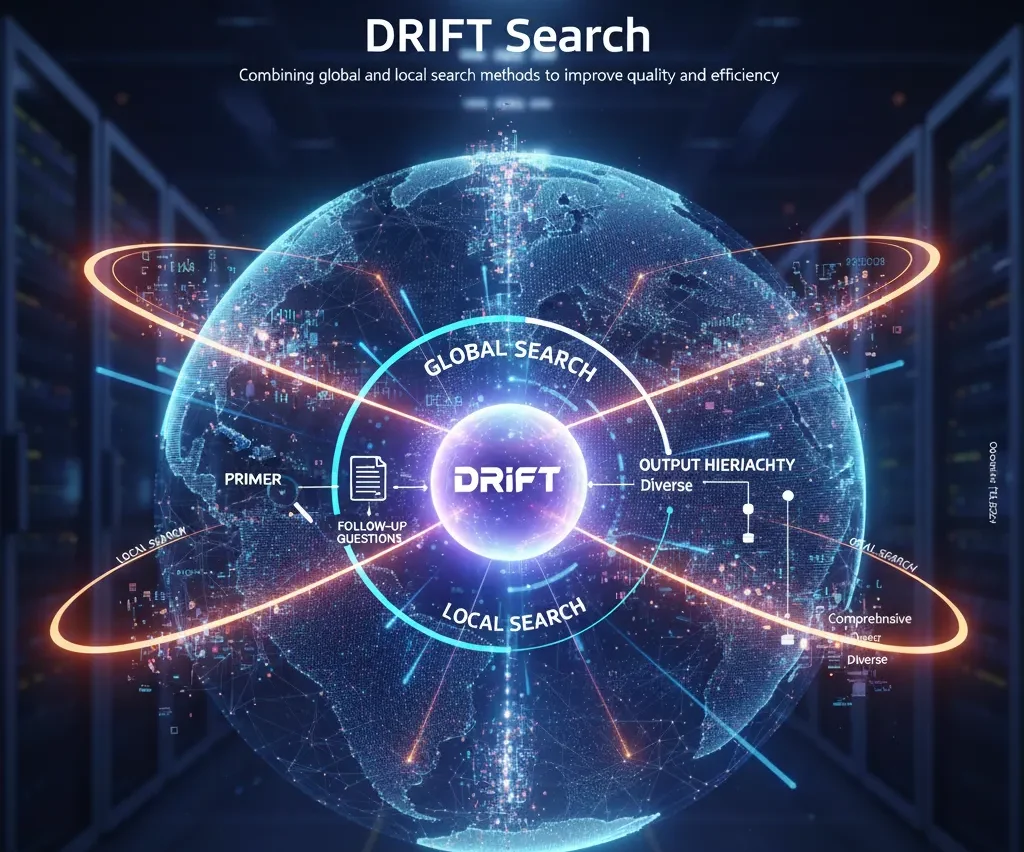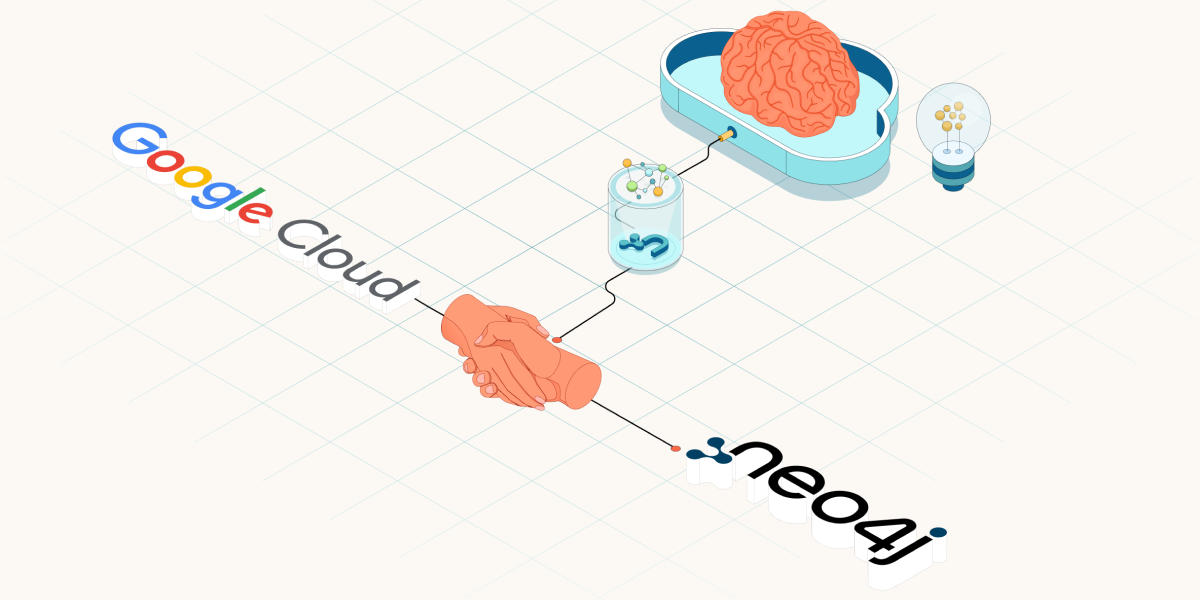What Is Generative AI?

Director of Corporate Storytelling & Content, Neo4j
12 min read

The rise of generative AI (GenAI) is transforming how businesses operate and society’s very fabric. With the potential to alter how we work, create, communicate, and consume, GenAI is poised to have an impact as significant as the internet and the mobile phone (combined!).
GenAI will bring many opportunities and challenges as it advances and permeates various aspects of our lives. GenAI has the power to automate mundane tasks and unlock new possibilities for creativity and problem-solving — from personalized content creation to data-driven decision-making.
However, the rapid growth of GenAI also raises important questions about its potential unintended consequences. As the technology becomes more sophisticated and ubiquitous, it’s critical to consider data privacy, algorithmic bias, and the ethical implications of AI-generated content. Developers, tech leaders, and policymakers will face a crucial challenge in ensuring responsible development and deployment of GenAI in the coming years.
For those working in data and AI, staying informed about the capabilities and implications of GenAI is essential. Whether you’re a developer building AI-powered applications, a data scientist exploring new use cases for GenAI, or a tech leader guiding your organization’s AI strategy, a deep understanding of this transformative technology will be critical to success in the era of GenAI.
In this blog post, we provide a comprehensive introduction to GenAI, covering its key characteristics, the rise of large language models (LLMs), and how it differs from traditional AI.
How Does Generative AI Work?
Generative AI, or GenAI, is short for generative artificial intelligence. GenAI is a subset of artificial intelligence (AI) that creates new content based on learned patterns and rules, such as text, images, audio, and code. Unlike traditional AI systems designed to recognize or classify existing data, generative AI models can produce novel outputs that resemble the data they were trained on.
Generative AI works by using advanced machine learning algorithms, particularly deep learning and neural networks, to analyze and learn from large datasets. Transformer models are at the core of many generative AI systems and use self-attention mechanisms to process and generate sequential data.
The Rise of the Transformer Model
The foundation of modern GenAI can be traced back to the introduction of the transformer model in a 2017 paper titled “Attention Is All You Need” by researchers at Google Brain. The transformer model revolutionized the field of natural language processing (NLP) by introducing a self-attention mechanism that allowed the model to weigh the importance of different parts of the input when generating output.
Transformers convert text and data into vector embeddings, which are numerical representations of the input. With the help of NLP, the vectorization process helps determine the semantics, such as how words are related, and dictates the ability of the generative AI model to produce output similar (though not identical) to its training data.
The transformer architecture and other deep learning techniques enabled the development of large language models trained on vast amounts of text data to generate human-like responses. One of the first notable examples of a large language model was GPT (Generative Pre-trained Transformer), developed by OpenAI in 2018. GPT showcased the potential of transformer-based models for generating coherent and contextually relevant text.
The Era of LLMs
Following the success of GPT, several other LLMs were introduced, each pushing the boundaries of what was possible with GenAI. Models like Google’s BERT (Bidirectional Encoder Representations from Transformers) and Facebook AI Research’s RoBERTa (Robustly Optimized BERT Pretraining Approach) demonstrated remarkable performance on various NLP tasks, from sentiment analysis to question answering.
As LLMs grew in size and complexity, they exhibited increasingly impressive capabilities. Models like GPT-3, released by OpenAI in 2020, showcased the ability to generate highly coherent and contextually relevant text with minimal prompting. This marked a significant milestone in the evolution of GenAI, as it demonstrated the potential for models to generate human-like content with unprecedented fluency. Researchers also explored techniques like fine-tuning to adapt pre-trained models to specific domains or tasks, further enhancing their performance and versatility. Now, large language models like GPT-4 and DALL-E 3 can generate human-like text, realistic images, and even code.
The ChatGPT Phenomenon

In November 2022, OpenAI released ChatGPT, a conversational AI model based on GPT-3.5. ChatGPT quickly gained widespread attention for its ability to engage in human-like conversations, answer questions, and generate text across various topics. The model’s ease of use and impressive output quality made it accessible to a broad audience, sparking a surge of interest in GenAI among the general public.
The success of ChatGPT brought GenAI into the mainstream, highlighting the potential for these models to transform various industries and aspects of our daily lives. It also raised important questions about the ethical implications of AI-generated content, the potential for misuse, and the need for responsible development and deployment of GenAI technologies.
How Generative AI Differs from Traditional Artificial Intelligence
Traditional AI typically involves algorithms designed to perform specific tasks. These models are trained on predefined datasets and operate within a fixed scope, following set rules or patterns. For instance, a traditional AI model might excel at classifying images or predicting stock prices, but its functionality is limited to those particular tasks. It requires structured data and extensive manual feature engineering to achieve high accuracy.
Generative AI models, like GPT, are trained on vast datasets and can generate new content across various domains, from text and images to code and beyond. The key distinction lies in GenAI’s ability to synthesize novel ideas and solve complex problems that mimic human creativity. This flexibility makes GenAI a powerful asset for tasks requiring innovation and adaptability, going beyond the limitations of traditional AI’s specialized functionality.
What Are the Benefits of Generative AI?
GenAI presents opportunities to improve decision-making, customer experiences, operational efficiency, and innovation:
- Strategic Decision-Making: GenAI can analyze vast amounts of structured and unstructured data, providing insights that inform strategic decision-making. By generating comprehensive reports, identifying trends, and predicting potential outcomes, GenAI empowers business leaders to make data-driven decisions with confidence.
- Enhanced Personalization: GenAI enables businesses to personalize customer interactions at scale. From generating tailored content recommendations to providing intelligent customer support through AI chatbots and conversational AI, GenAI helps businesses deliver exceptional experiences that foster customer loyalty and satisfaction.
- Operational Efficiency: GenAI can significantly improve operational efficiency by automating routine tasks and streamlining processes, like optimizing supply chain management or generating financial reports. This frees human resources to focus on higher-value activities, resulting in cost savings and increased productivity.
- Innovation and Competitive Advantage: GenAI enables businesses to explore new opportunities and stay ahead of the competition. By assisting humans in generating ideas, designs, and solutions, GenAI can accelerate product development, identify untapped markets, and create differentiated offerings that set businesses apart in their industries.
The examples mentioned above merely scratch the surface of what’s possible with GenAI. As the technology continues to evolve, we can expect to see even more innovative applications across industries, from healthcare and finance to manufacturing and beyond.
However, to apply GenAI to mission-critical systems, businesses must navigate various challenges and pitfalls. While GenAI offers immense opportunities, it also presents unique risks and considerations that must be addressed to ensure its responsible and effective deployment.
Popular Generative AI Use Cases
As GenAI evolves, developers are building a wide array of generative AI tools that can be applied across various industries. These tools are expanding the potential applications of GenAI, including:
Enhanced Customer Experiences
As mentioned earlier, GenAI can be used to personalize customer experiences. More specific customer interactions and marketing strategies include:
- Real-time Personalization: GenAI models can instantly process user data such as demographics, behavior, and context to identify patterns and preferences, generating highly personalized marketing copy and visuals on the fly.
- Chatbots and Virtual Agents: Next-generation AI-powered chatbots can provide more natural, context-aware responses and even initiate actions on behalf of customers.
Software Development and Building Applications
GenAI can accelerate software development processes and building apps through:
- Automated Code Generation: AI tools can write and optimize code, speeding up development and reducing errors.
- Application Modernization: GenAI can automate the repetitive coding required to update legacy applications for modern cloud environments.
- Bug Detection and Fixing: AI algorithms can analyze codebases to identify potential bugs and vulnerabilities, as well as suggest optimizations for improved performance.
Productivity and Workflow Optimization
GenAI can enhance operational efficiency across various business functions:
- Automated Documentation: GenAI can generate and summarize business proposals, legal documents, reports, and other corporate communications.
- Digital Labor: AI can assist in creating or revising contracts, invoices, and other paperwork, freeing up employees for higher-value tasks.
- Intelligent Assistance: GenAI can provide context-aware support for employees handling corporate and customer information, boosting productivity.
Product Design and Innovation
GenAI is shifting the product development process:
- Design Iteration: AI algorithms can generate and evaluate multiple design options, helping engineers and designers create better products more efficiently.
- Simulation and Analysis: GenAI can run complex simulations, conduct what-if scenarios, and assess risks, providing valuable insights for product development and optimization.
Advanced Analytics and Decision Support
GenAI is enhancing data analysis and decision-making capabilities:
- Predictive Analytics: AI models can analyze vast amounts of data to identify trends, forecast outcomes, and provide actionable insights.
- Risk Assessment: GenAI can evaluate complex scenarios and compile findings into comprehensive reports, supporting informed decision-making.
Scientific Research and Drug Discovery
GenAI is accelerating scientific breakthroughs:
- Data Analysis: AI algorithms can process and analyze large volumes of data from clinical trials, scientific literature, and other sources to discover and identify potential drug targets or research directions.
- Image Generation: In healthcare, generative models can create synthetic medical images for training and testing imaging systems.
Content Generation and Creative Assistance
GenAI can augment creative processes:
- Automated Content Creation: AI can generate various types of content, including articles, social media posts, and even basic video scripts. More and more people are also using AI for image generation.
- Creative Ideation: GenAI can assist in brainstorming sessions, providing novel ideas and perspectives to spark human creativity.
Generative AI Challenges
Generative AI models are only as good as the data on which they are trained. Biased, inaccurate, or incomplete data can lead to flawed outputs and perpetuate unfairness.
Data Quality and Bias
The quality and diversity of training data are critical factors in the performance and fairness of GenAI models. Biased, inaccurate, or incomplete data can lead to flawed outputs, perpetuate unfairness, and even amplify societal biases. For example, if a GenAI model is trained on a dataset that underrepresents certain demographics, it may generate outputs that are less accurate or relevant for those groups.
AI companies are actively working to address these challenges. OpenAI, Google, and Anthropic have all emphasized the importance of curating diverse and representative datasets. For example, Anthropic developed a technique called “constitutional AI” to align their models with specific values, reduce the risk of harmful outputs, and ensure that the model’s outputs align with ethical principles. Techniques like generative adversarial networks (GANs) and diffusion models are also being explored to generate more diverse and representative training data, helping to mitigate biases in GenAI models.
Accuracy and Hallucinations
Even with high-quality training data, GenAI models can sometimes generate inaccurate or nonsensical outputs, known as “hallucinations.” These hallucinations can range from minor inconsistencies to completely fabricated information. In mission-critical applications, such inaccuracies can have serious consequences, leading to incorrect decisions or actions.
Addressing the issue of hallucinations is an ongoing challenge in the GenAI field. Researchers are exploring techniques like “consistency training” and “factuality scoring” to improve the accuracy and coherence of generated outputs. However, achieving perfect accuracy remains an elusive goal, and businesses must be aware of the limitations and potential risks associated with GenAI systems.
Explainability and Transparency
The inner workings of GenAI models are often described as a “black box.” Due to the complexity and scale of GenAI models, it can be challenging to understand exactly how they arrive at their outputs. This lack of transparency raises concerns about accountability and trust, particularly in mission-critical applications where the stakes are high.
Even industry leaders like Google have acknowledged the challenges of explainability in AI. In a 60 Minutes interview, Google CEO Sundar Pichai admitted that people “don’t fully understand” how artificial intelligence works and the state of the technology is still somewhat of a black box to researchers.
Efforts are underway to improve the explainability and transparency of GenAI models. Techniques like “attention visualization” and “probing” aim to provide insights into the model’s decision-making process. Additionally, some companies, like Anthropic, are taking novel approaches to peek inside the black box.
Anthropic researchers are trying to reverse engineer their language model, Claude, to understand why it generates specific outputs. By identifying combinations of artificial neurons that evoke specific concepts or “features,” they have created a sort of Rosetta Stone to decode the neural network. This approach has the potential to make LLMs safer by pinpointing where dangers lurk within the model.
Security and Privacy
The use of GenAI in mission-critical systems also raises concerns about security and privacy. GenAI models often require access to sensitive data, such as personal information or proprietary business data. Ensuring the security and confidentiality of this data is crucial to maintaining trust and complying with regulations.
Businesses must implement robust security measures to protect their GenAI systems from unauthorized access, data breaches, and malicious attacks. This includes techniques like encryption, access controls, and secure computing environments. Additionally, privacy-preserving techniques like differential privacy and federated learning can help to protect individual data points while still enabling the benefits of GenAI.
Emerging Techniques to Address Generative AI Challenges
As businesses explore the potential of GenAI, they are grappling with the challenges of accuracy, explainability, and security, especially when pairing GenAI with their proprietary data. To address these challenges, particularly in enterprise settings, new techniques are emerging that combine large language models with other data systems and data sources, particularly in enterprise settings.
One such technique is Retrieval-Augmented Generation (RAG), which enhances the responses of language models by retrieving relevant information from external data sources. RAG enables GenAI systems to provide more accurate and contextually relevant answers by grounding the generated content in verified information. It’s like giving the AI access to a reference library to improve its answers.
Taking this a step further, GraphRAG (Graph-Based Retrieval-Augmented Generation) uses knowledge graphs to provide an even richer context for GenAI responses. By representing data in a structured and interconnected manner, knowledge graphs enable GenAI systems to understand complex relationships, perform multi-hop reasoning, and generate more accurate and explainable outputs.

Example of a knowledge graph.
GraphRAG offers several key benefits for enterprise GenAI applications:
- Improved Accuracy: By integrating domain-specific knowledge from enterprise data sources, GraphRAG reduces the risk of hallucinations and ensures that generated content aligns with verified facts.
- Enhanced Relevancy and Context: Knowledge graphs enable GenAI systems to understand the relationships between entities and concepts, providing a rich context for generating relevant and meaningful responses. By tapping into the interconnected nature of knowledge graphs, GraphRAG can surface insights and recommendations that are tailored to the user’s specific needs and context.
- Increased Explainability: Knowledge graphs provide a transparent structure that allows users to trace the reasoning behind GenAI outputs, making the decision-making process more understandable and auditable. By visualizing the connections between entities and concepts, GraphRAG enables users to understand how the AI arrived at a particular conclusion, increasing trust and accountability.
As these techniques mature, we can expect to see more enterprises adopting GraphRAG and similar approaches to build trustworthy, context-aware GenAI applications that drive real business value.
The Future of GenAI: Unlocking New Possibilities
The rapid advancements in GenAI are just the beginning of a transformative journey. As the technology continues to evolve, we can anticipate even more impressive capabilities and applications across industries.
In the near future, GenAI will likely become an integral part of our daily lives, seamlessly integrating with various devices and platforms to provide personalized, context-aware assistance. From smart homes to virtual personal assistants, GenAI will play a crucial role in shaping our interactions with technology.
For businesses, GenAI will open up new avenues for innovation, efficiency, and growth. Organizations will be able to automate complex tasks, gain deeper insights from vast amounts of data, and create highly personalized customer experiences. As the data ecosystem around GenAI matures, even small and medium-sized enterprises will be able to tap into its potential to level the playing field and compete with larger players. Expectations are rosy on that note, and experts predict that GenAI will be pervasive within a decade:
- By 2025, it’s expected to be in 80% of conversational AI tools
- By 2030, in part due to GenAI (McKinsey), activity that accounts for about a third of US workers’ time could be automated
- By 2032, the GenAI market is expected to hit $191 billion
However, the future of GenAI also demands a responsible and ethical approach. As GenAI becomes more powerful and pervasive, it is crucial to prioritize transparency, accountability, and fairness. Developers, policymakers, and business leaders must work together to establish guidelines and best practices that ensure the safe and beneficial deployment of GenAI systems.
At Neo4j, we are committed to empowering businesses to build accurate and explainable GenAI applications. Our GraphRAG approach combines the power of knowledge graphs, vector search, and generative AI models to create accurate, explainable, and context-rich GenAI solutions.



